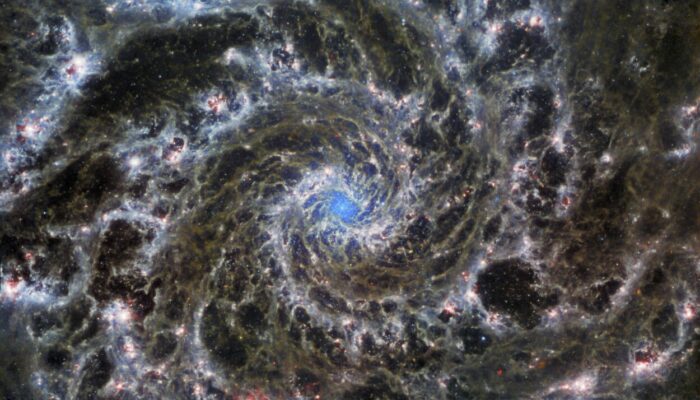This month, IMAX screens across the country will be welcoming the new documentary Deep Sky to audiences. It is a finely-tuned 40-minute profile of the history and mission of the James Webb Space Telescope launched in 2022. Deep Sky is G-rated, fit for all ages, and deserves the attention of every possible family and school-aged kid. Why? It is because Deep Sky continues a dedicated cycle of inspiration in the field of astronomy that has gone on for nearly three-quarters of a century. Readiness meets necessity beautifully as the cycle continues across generations.
Each generation of aspiring minds needs a groundbreaking pioneer person or project to be a catalyst for new dreams. Sally Ride, after being 18 when Apollo 11 landed on the moon, answered a newspaper ad for NASA applications in 1977 and went on to become the youngest and first American woman astronaut in space. A young Mae Jemison watched Sally and became the first Black female astronaut nine years later. Abigail Fraemen, featured in Good Night Oppy, visited NASA’s Mars Science Laboratory as a student and would go on to work in the very same operations facility when the titular Mars rover lasted 15 years longer than its intended mission.

Prospective paths such as those bring us to Deep Sky directed by Nathaniel Kahn (My Architect and The Price of Everything) and the James Webb Space Telescope (shortened frequently to JWST). To introduce the impetus of the multi-billion dollar endeavor, the documentary considers the history and advancement of telescopes dating back to Galileo in the early 17th century, when his findings on the Moon, planets, and Sun were cemented into scientific cornerstones. The engineers, specialists, and scientists of the current 21st century featured in Deep Sky who stewarded the JWST took much of their inspiration from the 30+ year service records of the Hubble Telescope launched in 1990. Their project was to create Hubble’s successor and pave their piece of the continuing cycle of inspiration to honor and celebrate.
Deep Sky begins examining the James Webb Space Telescope in 2016 with the completion of its final assembly at the Goddard Space Center in Greenbelt, Maryland. Its launch is still five years away, and the current problem-solving and design process of that time period was centered on a two-fold challenge. The first was to fold the 18 coordinated honeycomb mirrors of what they created to fit safely into a rocket. The second was to engineer a deployment procedure that would successfully enable the JWST to emerge from the rocket, travel nearly a million miles to its destination point, and unfold its many components properly. The interviewed scientists reveal that this process had 344 single-point failure steps, meaning any one miscalculation could end the entire mission before it truly starts. By comparison, a typical NASA mission has about a dozen single-point failure moments.

Once the JWST hits its mark and unfurls its mighty mirrors, the rush of enveloping IMAX visuals take over the film backed with the steady and eternally optimistic narration from five-time Academy Award nominee Michelle Williams. The visual effects simulating the James Webb Space Telescope in action transition viewers through some of JWST’s early photographic findings. The specialty of the JWST is its improved NIRcam infrared technology to see farther into space and with more detail than Hubble. To prove the evolution, Deep Sky puts many images from Hubble side-by-side with updates from JWST, and the results filtering out previous dust are astonishing.
The documentary’s demonstration of JWST’s power—to find oodles of galaxies from a sliver of viewable space and be a proverbial time machine into the billions of years of cosmic history—is what generates Deep Sky’s engrossing awe. The JWST is discovering phenomena, exoplanets, black holes, and other unexplained features and objects never imagined and beyond previous beauty and curiosity. The discussing scientists coalesce all of the rapturous imagery with the very human reminder that all of what is seen and known—including the immortal atoms that make up all of us—are part of the birth, death, and rebirth of stars.
Much like the scientifically wondrous notion of us forged by recycled dust of past celestial bodies, the documentary’s powerful implications and posed questions give Deep Sky viewers immense swell and pause. Even though Deep Sky is an abrupt shorthand version (the running time could have been doubled with zero complaints) of a continuing story, it is exactly the type of presentation and ponderous point that will rightfully and fruitfully inspire the next generation of innovators and explorers. Somebody somewhere who watched Good Night Oppy two years ago is plotting their own future. Somebody somewhere is going to watch Deep Sky, hear Williams’ lush poeticism, and do the very same. If the telescope needed a theme song, we can queue The Carpenters because we’ve only just begun our new history with the James Webb Space Telescope.




